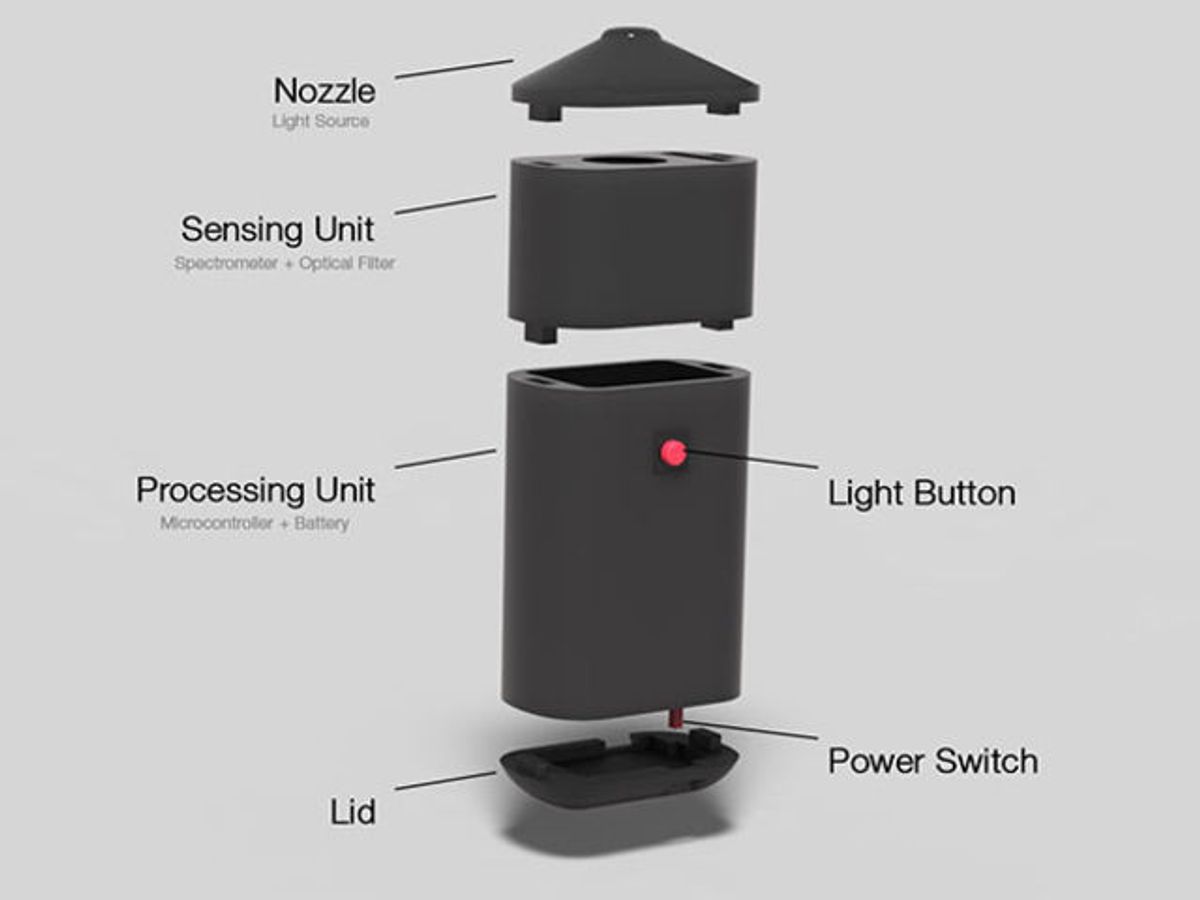Want an apple with a perfectly crisp, sweet, juicy bite? A new handheld device can help. Researchers have made a portable spectrometer that scans fruit and wirelessly relays data to a smartphone app that tells you whether the fruit is ripe.
Unlike the bulky, expensive spectrometers used today to test food and drug quality, the new gadget is about the size and weight of a collectible matchbox car. It consumes little power, and it costs less then $250 according to its inventors at MIT.
Farmers could use the smartphone-based device in the field to determine the ideal harvesting time for apples and other fruit, the inventors say. Or it could find use in storage facilities to sort fruit and vegetables and to check ripeness. It could also be adapted for consumers, helping them avoid the unpleasantness of tart or rotten fruit.
The food industry today uses one of two methods to test apple ripeness. One is to measure firmness using penetrometers and sclerometers. Both devices rely on measuring the force required to insert a probe into the fruit. The other test in use today, called Brix, measures the sugar content of the fruit juice using light refraction. Both methods are destructive, says MIT Media Lab researcher Anshuman Das.
Das and his colleagues turned to optical spectroscopy instead. “We use light to probe the sample, making the technique rapid and non-destructive,” he says.
The team bought a spectrometer chip and packaged it along with an ultraviolet LED, optical filters, a Bluetooth module for wireless data communication, an Arduino microcontroller for analog-to-digital conversion, and a rechargeable lithium-ion battery into a small 3D printed case.
To test ripeness, they shine UV light on the fruit. The spectrometer measures the fluorescent emissions of the UV-excited chlorophyll in the apple’s skin. Because chlorophyll determines photosynthetic activity, it is a good indicator of growth as well as nutrient and color compounds in fruit. “The strength of the fluorescence drops as the fruit ripens,” explains Das.
The device sends fluorescence data wirelessly to a smartphone, where an app built by the researchers plots and stores the data. Das and his colleagues tested the device on three different varieties of apples as they ripened over 11 days, and found that their results correlated with the ripeness measured by a penetrometer.
The technique should work on other fruit and vegetables in which chlorophyll fluorescence is significant, such as bananas and oranges. But the researchers will have to gather more data on different fruit in order to come up with a software model that works for each. Consumers would likely want an app that standardizes the data and gives a simple yes/no answer.
Others have previously made portable smartphone spectrometers. But they use the phone camera as the detector, resulting in inconsistent readings that lead to unreliable, low-quality data, Das says. The new device, reported in the journal Scientific Reports, is the first compact, standalone spectrometer that connects wirelessly with a smartphone, and it gives consistent, reliable results. An Israeli company, however, is also working on a handheld spectroscopy tool to test the chemical composition of food.
The researchers plan to release an open source platform that has all the information needed to replicate and further develop the device. It will be available at https://hackaday.io/project/13422-wisci-wireless-spectrometer.
Prachi Patel is a freelance journalist based in Pittsburgh. She writes about energy, biotechnology, materials science, nanotechnology, and computing.



